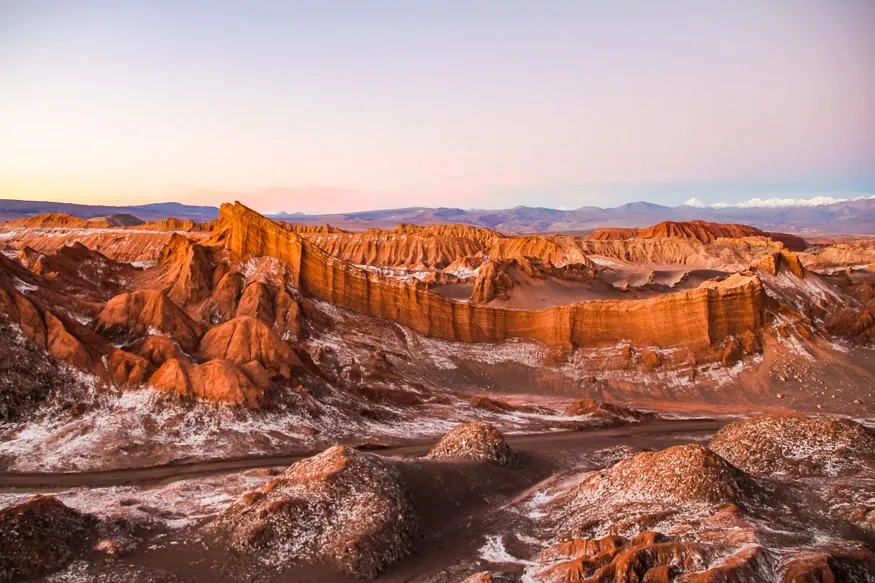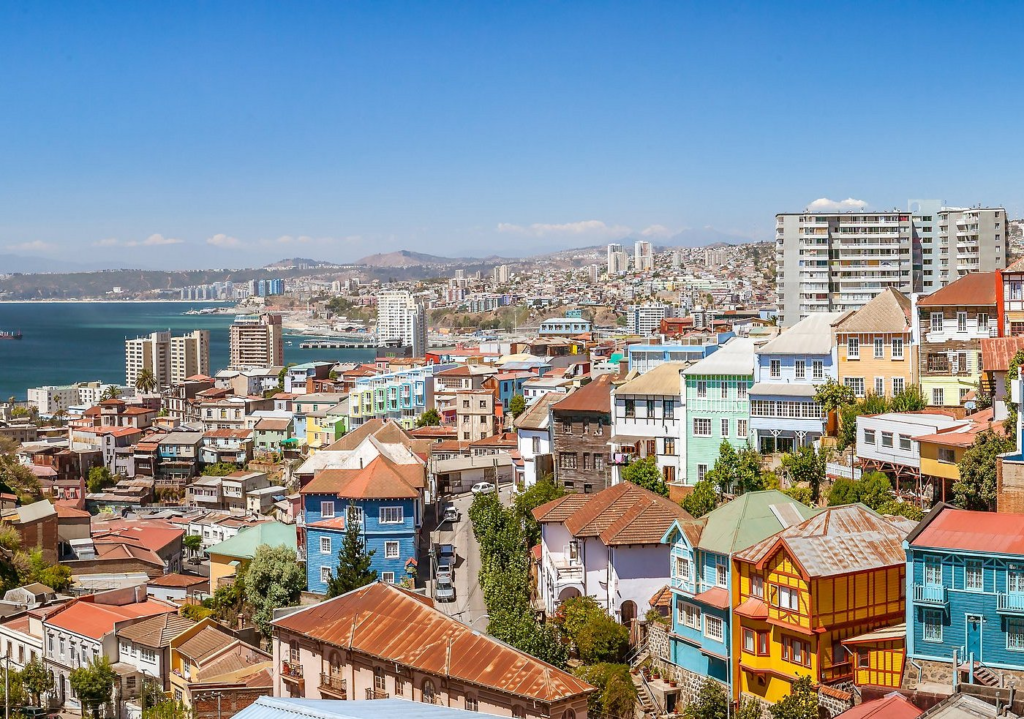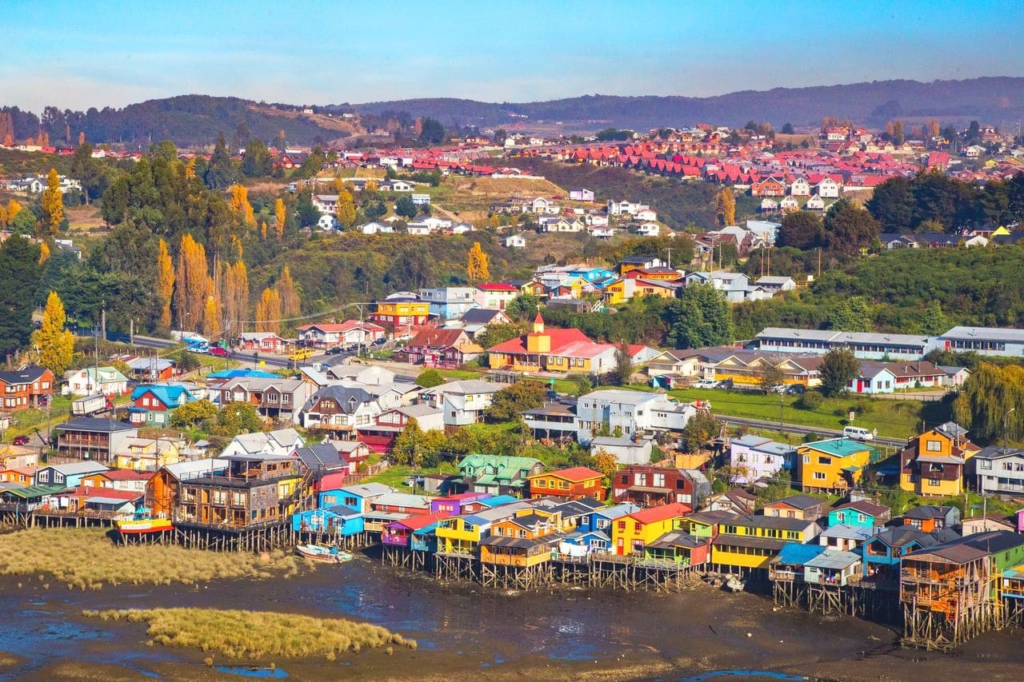Chile, stretching over 4,300 kilometers down the western edge of South America, is a land of extraordinary diversity and breathtaking landscapes. From the driest desert in the world to lush temperate rainforests and rugged mountain peaks, The country offers a rich tapestry of natural beauty and cultural heritage. This elongated country is a treasure trove for travelers seeking adventure, relaxation, and unique experiences.
Table of Contents
Geography
Chile spans approximately 756,102 square kilometers, making it the 38th largest country in the world. Its remarkable length means it encompasses a wide range of geographic features, from the Atacama Desert in the north to the icy landscapes of Patagonia in the south. This diversity in terrain creates a stunning contrast within its borders, offering everything from arid deserts to glacial fjords.
The northern region of Chile is dominated by the Atacama Desert, known as the driest place on Earth. This desert landscape is characterized by its salt flats, sand dunes, and unique rock formations. Moving south, the landscape transitions into fertile valleys and lush forests, with the central region featuring vineyards and agricultural lands.
In the south, Chile’s geography becomes more dramatic, with the Andes Mountains running parallel to the coast and extending into Patagonia. This mountainous region is renowned for its fjords, glaciers, and pristine lakes. The southern tip of Chile, Tierra del Fuego, is a wild and remote land of stunning natural beauty.
States of Chile
Chile is divided into 16 regions, which function similarly to states in other countries. Each region has its own government and administrative structure. Here is a table with the regions of Chile and their capitals:
| No. | Region | Capital |
|---|---|---|
| 1 | Arica y Parinacota | Arica |
| 2 | Tarapacá | Iquique |
| 3 | Antofagasta | Antofagasta |
| 4 | Atacama | Copiapó |
| 5 | Coquimbo | La Serena |
| 6 | Valparaíso | Valparaíso |
| 7 | O’Higgins | Rancagua |
| 8 | Maule | Talca |
| 9 | Ñuble | Chillán |
| 10 | Biobío | Concepción |
| 11 | La Araucanía | Temuco |
| 12 | Los Ríos | Valdivia |
| 13 | Los Lagos | Puerto Montt |
| 14 | Aysén | Coyhaique |
| 15 | Magallanes y la Antártica Chilena | Punta Arenas |
| 16 | Metropolitana de Santiago | Santiago |
History
Chile’s history is a blend of indigenous cultures, Spanish colonization, and modern development. The region was originally inhabited by indigenous peoples such as the Mapuche, Aymara, and Rapa Nui. These cultures had rich traditions and a deep connection to the land long before European arrival.
The Spanish arrived in the 16th century, leading to the colonization of Chile and the establishment of Santiago as the capital. Spanish rule brought significant changes to the region, including the introduction of European customs, language, and religion. Chile remained a Spanish colony for nearly three centuries.
The quest for independence began in the early 19th century, with Chile achieving its independence from Spain in 1818 after a series of uprisings and conflicts. Key figures in this struggle included Bernardo O’Higgins and José de San Martín. The newly independent Chile went through periods of political and economic change, shaping its modern identity.
In the 20th century, Chile experienced significant political shifts, including the rise of Salvador Allende, the first socialist president elected through democratic means, and the subsequent military coup led by General Augusto Pinochet. Pinochet’s regime was marked by human rights abuses and economic reforms. Since the return to democracy in the late 1980s, Chile has seen considerable economic growth and development, becoming one of South America’s most stable and prosperous nations.
Must-Visit Destinations
1. Atacama Desert

The Atacama Desert is renowned for its otherworldly landscapes, including salt flats, volcanic peaks, and sand dunes. Visitors can explore Valle de la Luna, with its moon-like terrain, and the El Tatio geysers, which erupt at sunrise. The desert’s clear skies also make it one of the best places in the world for stargazing.
2. Torres del Paine National Park

Torres del Paine National Park, located in southern Chile, is famous for its dramatic mountain scenery, including the iconic Torres del Paine peaks. The park offers a range of trekking opportunities, including the famous W and O circuits. Visitors can enjoy breathtaking views of glaciers, lakes, and rivers, as well as observe diverse wildlife such as guanacos and condors.
3. Santiago

Santiago, the capital city of Chile, is a vibrant metropolis surrounded by mountains. The city offers a mix of modern architecture and historical sites, including the Plaza de Armas and La Moneda Palace. Santiago is also known for its lively cultural scene, with numerous museums, theaters, and restaurants showcasing Chilean cuisine.
4. Valparaíso

Valparaíso is a colorful port city known for its steep hills, historic architecture, and artistic vibe. The city’s labyrinthine streets are lined with vibrant murals, boutique shops, and charming cafés. The UNESCO-listed historic district features funiculars and old-world charm, making it a fascinating destination for exploring Chile’s cultural heritage.
5. Easter Island

Easter Island, or Rapa Nui, is one of the most remote inhabited islands in the world, famous for its enigmatic Moai statues. These colossal stone figures are scattered across the island and are a testament to the island’s rich cultural history. Visitors can explore the island’s archaeological sites, beaches, and unique Polynesian culture.
6. Chiloé Island

Chiloé Island, located in southern Chile, is known for its distinctive architecture, including colorful wooden churches that are UNESCO World Heritage sites. The island’s folklore, including myths and legends about its supernatural creatures, adds to its charm. Visitors can also enjoy the island’s seafood, traditional crafts, and beautiful landscapes.
7. Aysén Region

The Aysén Region, situated in the Patagonian Andes, offers stunning natural beauty with its fjords, glaciers, and pristine lakes. The region is less visited than other parts of Patagonia, providing a more secluded experience. Highlights include the Marble Caves on Lake General Carrera and the Northern Patagonia Ice Field.
8. Pucón

Pucón is a popular resort town located on the shores of Lake Villarrica and near the Villarrica Volcano. The town is a hub for outdoor activities, including hiking, skiing, and hot springs. Pucón’s picturesque setting and range of adventure sports make it a favorite destination for nature enthusiasts and thrill-seekers.
9. Valle de Elqui

Valle de Elqui is known for its clear skies and perfect conditions for stargazing. The valley is also famous for its pisco production, a traditional Chilean spirit. Visitors can explore the local vineyards, enjoy scenic drives, and experience the tranquility of the valley’s landscapes.
10. San Pedro de Atacama

San Pedro de Atacama, a small town in the Atacama Desert, serves as a base for exploring the surrounding desert landscapes. The town features charming adobe architecture and offers excursions to nearby attractions such as the Atacama Salt Flats, Lagunas Altiplánicas, and the Valle de la Muerte.
Culture
Chile’s culture is a rich blend of indigenous heritage and Spanish influence, with a strong emphasis on family, traditions, and community. Traditional Chilean music, including genres such as cueca and tonada, plays an important role in cultural celebrations and daily life. The country’s folk dances and music reflect its diverse cultural roots and regional variations.
Spanish is the official language of the country, but indigenous languages such as Mapudungun, Quechua, and Aymara are also spoken by various communities. Chilean cuisine is known for its use of fresh, local ingredients, with dishes such as empanadas, cazuela (a hearty stew), and pastel de choclo (corn pie) being staples in Chilean households.
The country’s art scene is vibrant, with contemporary art, literature, and cinema gaining international recognition. Chilean artists, writers, and filmmakers contribute to a dynamic cultural landscape that reflects the country’s history, social issues, and creative expression.
Festivals
The country is known for its lively festivals, which celebrate its cultural diversity and traditions. One of the most significant festivals is the Festival de Viña del Mar, held annually in the city of Viña del Mar. This international music festival attracts artists from around the world and features performances across various genres, including pop, rock, and Latin music. The festival is a major event in Chile’s cultural calendar and draws large crowds each year.
Another notable festival is the Fiesta de la Tirana, held in the town of La Tirana in northern Chile. This vibrant celebration honors the Virgin of Carmen and features colorful processions, traditional dances, and lively music. The festival combines indigenous and Catholic traditions, creating a unique cultural experience that highlights Chile’s rich religious and folkloric heritage.
Economy
Chile’s economy is one of the most stable and prosperous in South America, driven by a diverse range of sectors. The country is a leading exporter of copper, with mining playing a crucial role in its economic development. Chile’s vast copper reserves contribute significantly to its GDP and export earnings.
In addition to mining, The country has a strong agricultural sector, producing fruits, vegetables, and wine for both domestic consumption and export. The country’s wine industry is internationally renowned, with Chilean wines being highly regarded for their quality and value. Tourism also plays an important role in Chile’s economy, with visitors drawn to its natural landscapes, cultural attractions, and adventure tourism opportunities.
Cuisine
Chilean cuisine is characterized by its use of fresh, local ingredients and a blend of indigenous and European influences. One of the country’s most popular dishes is the empanada, a pastry filled with various ingredients such as meat, cheese, or seafood. Empanadas are commonly enjoyed as a snack or appetizer and are a staple in Chilean cuisine.
Another traditional dish is cazuela, a hearty stew made with meat, vegetables, and potatoes. This comforting dish is often served during the colder months and is a symbol of Chilean home cooking. Pastel de choclo, a corn pie made with a layer of ground meat and vegetables topped with a layer of corn pudding, is another beloved dish that showcases the country’s agricultural products.
Top Eight Most Famous Food








Interesting Facts
- Chile is home to the Atacama Desert, the driest place on Earth.
- The country stretches over 4,300 kilometers, making it the longest north-south country in the world.
- Chile is known for its extensive wine production, with over 70 grape varieties grown.
- The Easter Island Moai statues are a significant cultural and archaeological treasure.
- Chile’s Torres del Paine National Park is renowned for its stunning mountain landscapes and glaciers.
- The city of Valparaíso is a UNESCO World Heritage site known for its colorful architecture and artistic vibe.
- Chile is one of the world’s largest producers of copper, a key driver of its economy.
- The country experiences a range of climates, from arid deserts to temperate rainforests.
- Chile’s Patagonia region features dramatic fjords, glaciers, and pristine lakes.
- Santiago, the capital, is nestled between the Andes Mountains and the Chilean Coastal Range.
Conclusion
Chile is a country of incredible diversity and natural beauty, offering a wide range of experiences for travelers. From the arid landscapes of the Atacama Desert to the glacial wonders of Patagonia, Chile’s geography is as varied as its cultural heritage. Its vibrant cities, rich culinary traditions, and lively festivals make it a fascinating destination for exploration. Whether you’re seeking adventure or relaxation, The country’s unique landscapes and cultural richness promise an unforgettable experience.
let’s enjoy few years on earth with peace and happiness….✍🏼🙏

